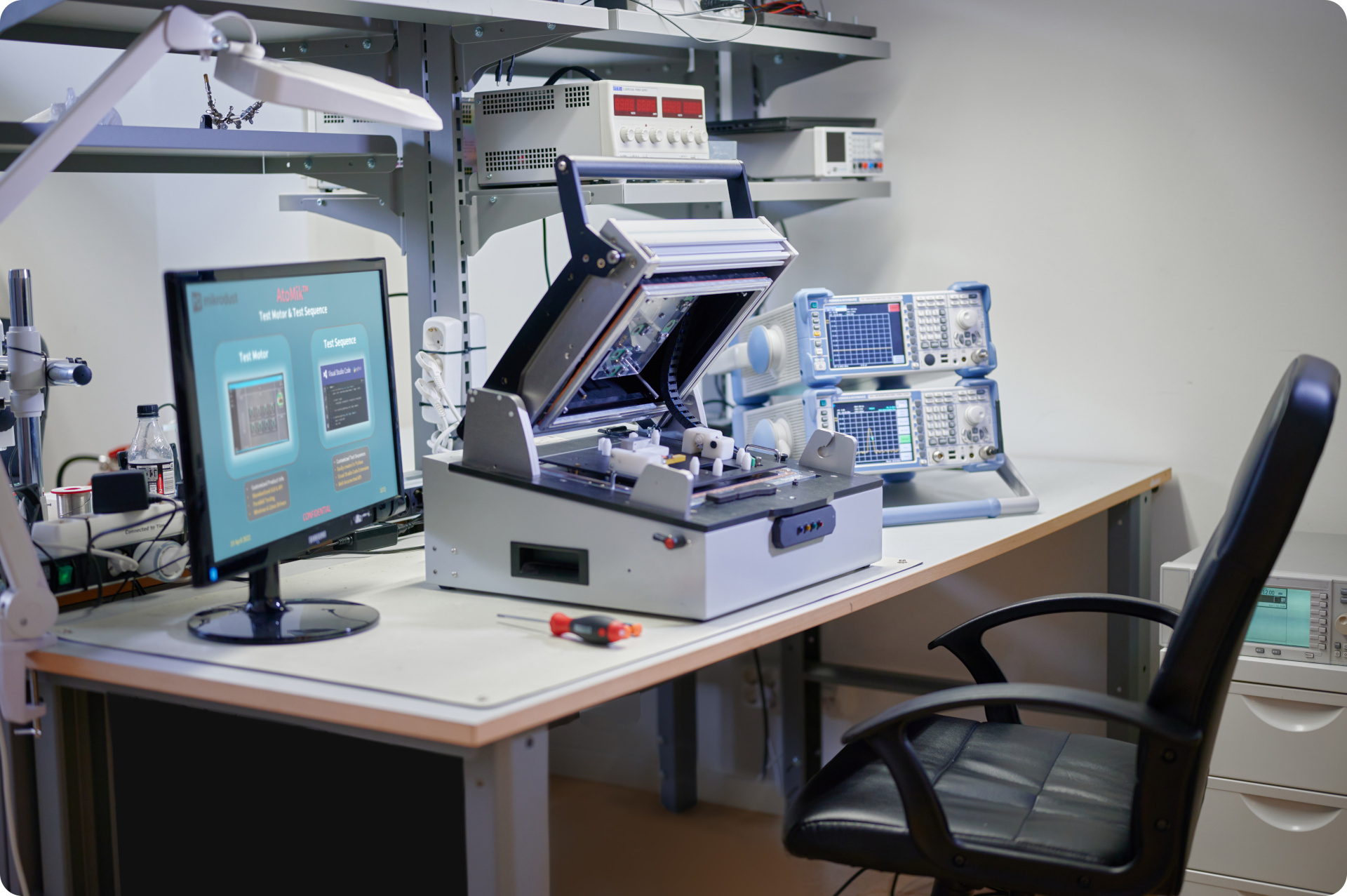Production test systems are essential for maintaining product quality, reducing returns, and ensuring customer satisfaction. They help manufacturers detect and address defects early in the production process, minimizing costly rework and improving yield rates. Additionally, robust test strategies contribute to compliance with industry regulations and safety standards. Three different testing methods used in electronics production will be described briefly in this AtoMik® White Paper.
Testing Methods for Electronics Manufacturing
Three commonly used testing methods for assembled PCB are: In-Circuit Testing (ICT), Functional Testing (FCT) and Boundary Scan Testing. They all have their pros and cons and will be further explained below.
In-Circuit Testing (ICT)
In-Circuit Testing involves using a bed-of-nails or flying probe tester to make direct electrical contact with test points on a PCB. Electrical signals are sent through specific test points to measure component values, check solder joints, and verify connections. This verifies the proper functionality of individual components. It is typically performed after the assembly process and before functional testing.
Functional Testing (FCT)
This approach evaluates the overall performance of a device under real-world operating conditions. Functional tests simulate actual usage scenarios to ensure the product meets its design specifications. To connect to the device under test (DUT) a bed of nails can still be used if the product is not mounted in an enclosure. Since the functional test not always need access to test points, an enclosed unit can also be tested using the same connection interface as the device use in normal operation. FCT can be used either after ICT or by itself to detect faulty production units.
Boundary Scan Testing
This technique is used for testing PCBs with limited physical test access since it only requires a JTAG port and no additional test points. It allows for testing interconnects between components and is particularly useful for high-density circuits. This type of testing is not able to achieve the same test coverage as ICT and FCT but can be a way to test without the need to develop a custom bed of nails or program a flying probe. However, to effectively use boundary scan the components on the DUT need to be carefully chosen. All components that should be controlled by the boundary scan, need to be boundary scan compatible.
Selecting a Suitable Test System
When selecting a test system, several factors must be considered. Here are three key topics to address when determining which test system to invest in.
Test Scope
First, determine what needs to be verified and identify potential production risks. Is the primary objective to validate signal integrity, power levels, communication protocols, calibration accuracy, or solder joint integrity? ICT focuses on component placement, shorts, and opens. Boundary scan can efficiently test interconnects and digital logic paths, while FCT ensures overall system functionality.
Cost and Time Constraints
Choosing a test strategy under cost and time constraints requires balancing initial investments and operational efficiency. The right approach minimizes time-to-market while controlling total cost of ownership. Investing in modular test solutions, such as AtoMik® Platform, can reduce setup time, accelerate new product release and lower cost by being able to reuse test equipment.
Low-cost test setups may reduce upfront expenses but can lead to higher maintenance costs and slower throughput in high-volume production. Automated test solutions and scalable fixture designs may have a higher initial investment but lower per-unit test costs over time. Selecting durable probes, high-reliability switches, and efficient test algorithms helps reduce downtime and maintenance, ensuring consistent yield and long-term savings.
Scalability and Flexibility
Test equipment and fixtures should align with production needs. In low-volume scenarios, modular and reconfigurable fixtures offer flexibility, while high-volume environments require robust, repeatable setups with durable probes, automated handling, and minimal mechanical wear. To optimize the cost per tested unit it is therefore important to know your production volume estimates before choosing a suitable testing strategy.
Contact us today if you want to learn more or get a quote for your test system!

